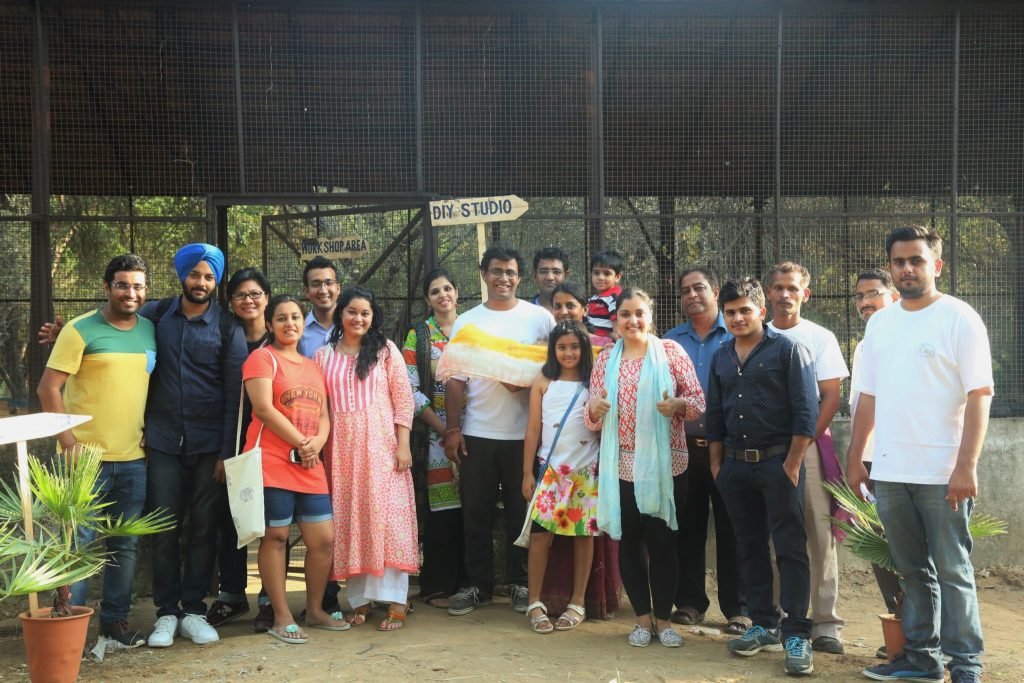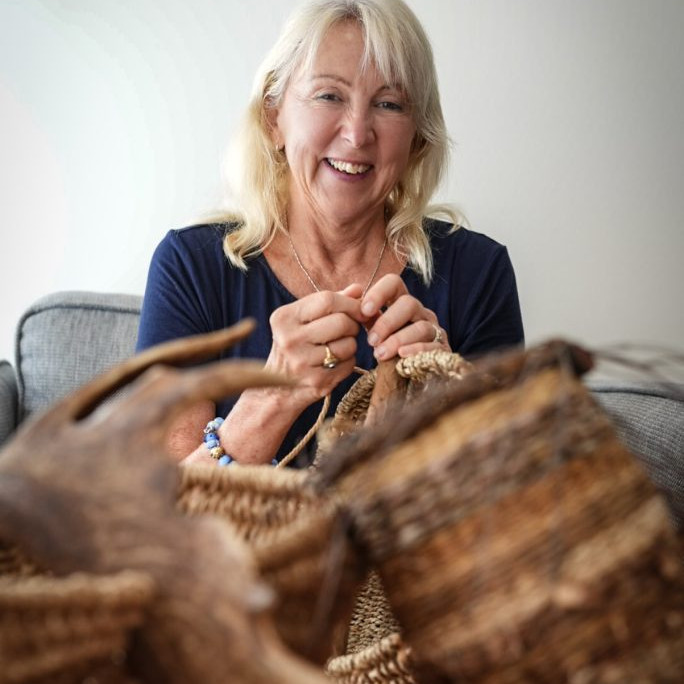Sidhart Sodhani Eco Artist - Jaipur, India
How did the Dye School coming into being?
I have been running a natural dye manufacturing and retail business over the past four and a half years and in 2016 when I felt that not enough people knew about natural dyes and natural dyeing, my brother and I, Sankalp came up with the idea of DiY – Dye it Yourself. One thing led to another and we held the first workshop in September 2016. The main objective of the workshop is to promote dyeing and other textile art forms like shibori and block printing as a fun activity and encourage people to take up these lost art forms. We impart knowledge on how easy it is to dye fabrics with the wastes generated in daily lives. One of the other major reasons of starting the workshop was to make the resources such as natural dyes available to the masses. What I had noted in 3 years of my business was that the market for natural dyes was very niche and the products were being sold as a luxury, which most certainly they weren’t.
At DiY we aim to reduce the impact of pollution caused by the chemical laden industry. Till January 2018 we have conducted more than 10 such amazing workshops with more than 50 participants in total.
You state that “Your aim is to make dyeing a habit.” Explain this statement.
As I said above, our aim is to make dyeing rather natural dyeing a habit to reduce the burden of pollution from the chemical laden dye industry. We have been striving to promote dyeing and use of waste household items for dyeing. The end objective is to provide a sustainable source of colour to the world that would not harm the environment and also get the work done. For this we have been spending a lot of time in researching on natural dyes as well. Our parent company, Sodhani Biotique has various biotechnologists who have been working tirelessly to work out a permanent solution for making natural dyes accessible to everyone.
The idea to inculcate the habit of dyeing in mindset of the people is what we are trying to achieve through this workshop. We show participants that natural dyeing is not rocket science and how they can at their home, dye their own fabrics.
What do your students learn about natural products that can easily be found in the home?
We have created several videos for the workshop that we show at the beginning. These videos basically shows our participants how natural dyes work and set the base to make them realize that all the products shown in the videos are easily achievable at their own homes.
Some of the examples that we run during the workshops are for:
Onion Peels, Walnut Shells, Turmeric, Pomegranate Peels
These are classic examples of how common products which are found at every home can be used to create natural dyes.
For e.g. – Onions peels when powdered and mixed in water will give you a beautiful pink shade on fabrics, Pomegranate peels grinded to powder and mixed with water to create a dye bath will give you different shades of yellows, Grinded walnut shells dye batch can give you a light brown shade.
We also have these products displayed at the workshop so that participants can get a firsthand experience of using them to dye fabrics.
Why should a tourist or locals take time out for a workshop with your company?
Primarily, because they are in for a fun packed day. So basically, we would recommend people even if they are not so much into textiles to attend the workshop because just like any other informative workshop this one is a super fun one. In addition to the fun that you will have, you also get to learn a lot about natural dyes, tie and dye and block printing. You get to play around with a bunch of natural colours and unleash your creativity on the fabrics/ garments.
One of the highlights of the workshop is that you get one organic cotton garment, one organic cotton bag to dye during the workshop. Additionally as a participant you are free to being as many garments/ fabrics to dye during the workshop.
Apart from this every workshop has approx. 5-6 participants which makes it a personalized workshop and our instructors are at the disposal of participants during the whole workshop which makes it interactive and interesting.
When we think of printing and India we naturally think Block Printing. Can you explain briefly the history of how India gave the world block printing?
Interestingly enough, Jaipur/ Bagru’s block printing is appreciated across the world and is a major highlight for all textile enthusiasts across the world. When we talk about India, you will get to hear about the bagh print, Ajrakh print, dabu print etc. which are majorly related to printing designs on a dyed fabric and similar to block printing in one way or another.
Block printings though suggested by historians to have originated in China has made its way to India. In India it flourished during the 12th century when it received a royal patronage from the ruling kings. Bagru, I would say has kept the lost art alive and has moreover revived it and distinguished it across the globe.
Block printing has commercially been successful since the manpower required in India is well trained and available in abundance. Therefore India has been able to make block printing successful. As the block printing became more successful and more commercially viable more and more highly skilled local craftsmen quickly mastered the textile art form.
Discuss the importance of colour to fabric in India?
Colours to fabric in India are as important as anywhere else in the world. However, I would like to say that we as Indians are more colourful than the rest of the world. Anyone who has been to India would agree to this statement.
We would always prefer a coloruful shiny dress in comparison to a plain solid one. We also believe that colours have a demonstrable psychological effect. Specific colours have specific meanings. Apart from this the lost list of festivals that India have, you are better if you have variety of colours in your wardrobe. All these factors when combined make India a colourful country. To wear coloured fabric you need to make colourful fabric and that’s what businesses do.
Expand on how your company has been able to employ local people, in relationship to the area you are in.
Local talent and artisans are the real heroes of the workshop. Faruq, who has been associated since our very first workshop is a master tie and dye artisan. His family has been in the trade for the past 5 decades and he himself has been practicing and doing tie and dye for more than 2 decades.
Without local artisans I am pretty sure that our workshop would not have flourished.
Be it block printers, tie and dye artists or the master dyers they have been an essential part of the workshop.
Our aim is to make sure that we employ local artisans in the workshop as they are definitely the authentic ones and you can rely on them to make each and every workshop interesting with new designs and new techniques.
Currently we have more than seven locals who are involved with the workshop. Some of them handle the operations part and the others are the artisans. Funny part is that one of our drivers tried his hands on dyeing and was pretty good at it as well. So now, he is also practicing to dye with us and soon will be dyeing fabrics for us.
Contact details:
Sidhant Sodhani
Dye it yourself Workshop
Dyeityourself@outlook.com
Sidhant, Jaipur, India
Interview by Deborah Blakeley, February 2018
Think a colleague or friend could benefit from this interview?
Knowledge is one of the biggest assets in any business. So why not forward this on to your friends and colleagues so they too can start taking advantage of the insightful information the artist has given?
Other artists you may be interested in:

















